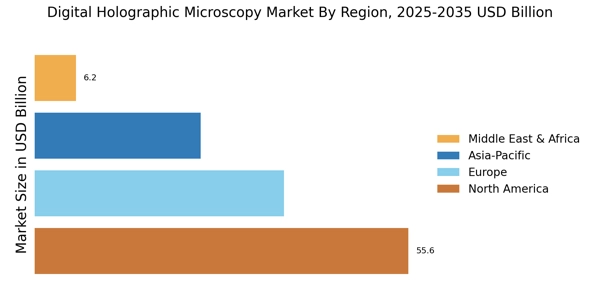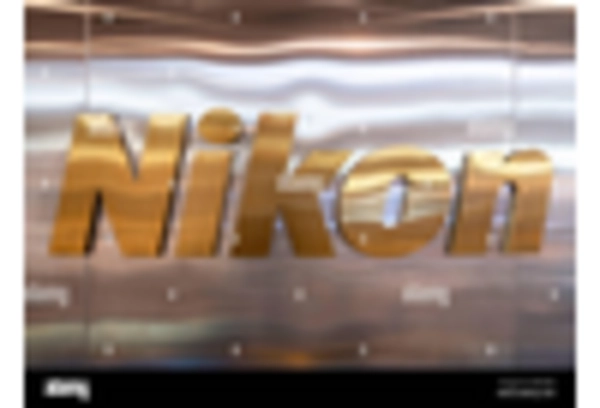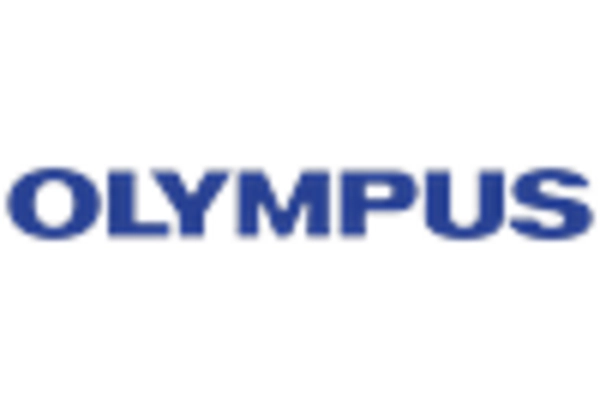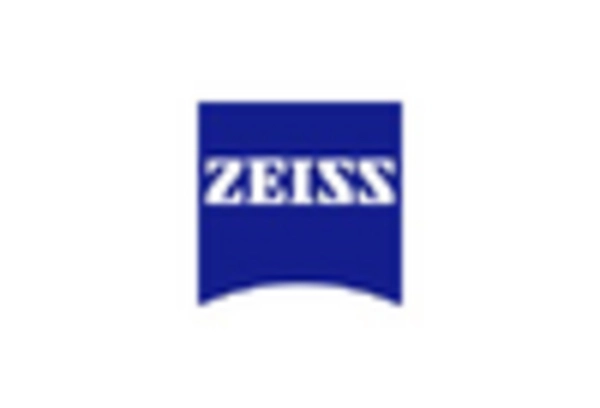Advancements in Imaging Technology
The Digital Holographic Microscopy Market is experiencing a surge in demand due to rapid advancements in imaging technology. Enhanced resolution and improved imaging capabilities allow for more detailed analysis of biological samples. This technological evolution is likely to facilitate the development of innovative applications in various fields, including life sciences and materials science. As imaging technology continues to evolve, the market is projected to grow at a compound annual growth rate of approximately 15% over the next five years. This growth is driven by the increasing need for precise imaging solutions in research and clinical settings, thereby expanding the scope of the Digital Holographic Microscopy Market.
Emerging Applications in Material Science
The Digital Holographic Microscopy Market is expanding its reach into material science, where it is utilized for characterizing materials at the micro and nano scales. This technology allows researchers to analyze the structural properties of materials without altering their physical state. As industries such as electronics and nanotechnology continue to evolve, the demand for precise material characterization is expected to rise. The material science sector is anticipated to grow at a compound annual growth rate of 7% over the next five years, which may further stimulate interest in digital holographic microscopy. This trend indicates a promising future for the Digital Holographic Microscopy Market as it adapts to meet the needs of diverse applications.
Growing Applications in Pharmaceutical Industry
The Digital Holographic Microscopy Market is increasingly being adopted in the pharmaceutical sector for drug development and quality control. The ability to visualize cellular interactions and drug effects in real-time is revolutionizing the way pharmaceutical companies conduct research. As the industry faces pressure to expedite drug development processes, digital holographic microscopy provides a valuable tool for assessing drug efficacy and safety. The pharmaceutical market is projected to grow at a rate of 6% annually, which is likely to drive further adoption of advanced imaging technologies. Consequently, the Digital Holographic Microscopy Market stands to benefit from this trend as more pharmaceutical companies integrate these tools into their workflows.
Rising Demand for Non-Invasive Diagnostic Tools
The Digital Holographic Microscopy Market is witnessing a notable increase in demand for non-invasive diagnostic tools. As healthcare providers seek to minimize patient discomfort and enhance diagnostic accuracy, digital holographic microscopy offers a compelling solution. This technology enables real-time imaging of live cells without the need for staining or invasive procedures. The market for non-invasive diagnostic tools is expected to reach USD 2 billion by 2026, indicating a robust growth trajectory. This trend is likely to propel the Digital Holographic Microscopy Market forward, as more laboratories and clinics adopt these advanced imaging techniques to improve patient outcomes.
Increased Investment in Research and Development
Investment in research and development is a critical driver for the Digital Holographic Microscopy Market. As academic institutions and private companies allocate more resources to explore the potential applications of digital holographic microscopy, the market is poised for significant growth. Recent reports indicate that R&D spending in the life sciences sector has increased by 10% annually, reflecting a strong commitment to innovation. This influx of funding is likely to accelerate the development of new technologies and applications, thereby expanding the Digital Holographic Microscopy Market. Enhanced collaboration between academia and industry is also expected to foster advancements in this field.

















Leave a Comment